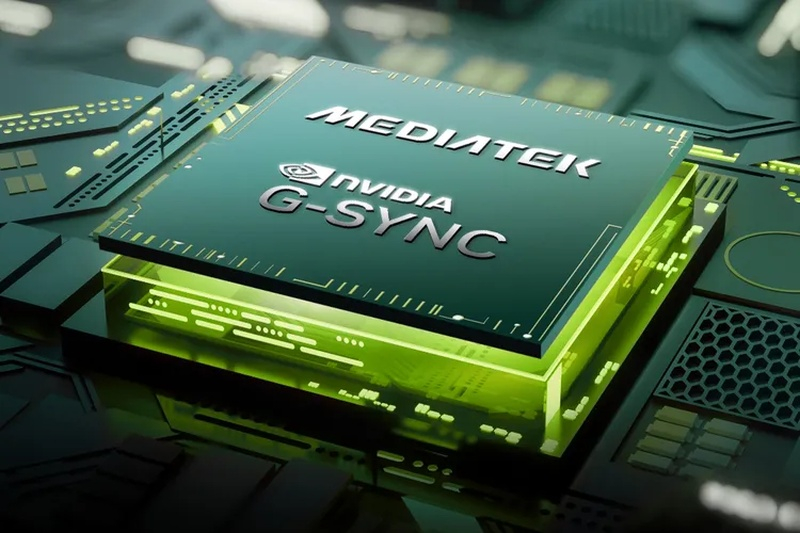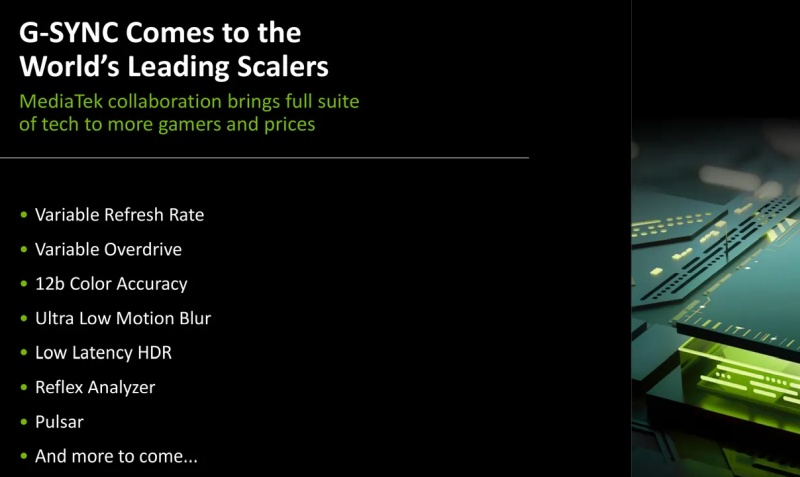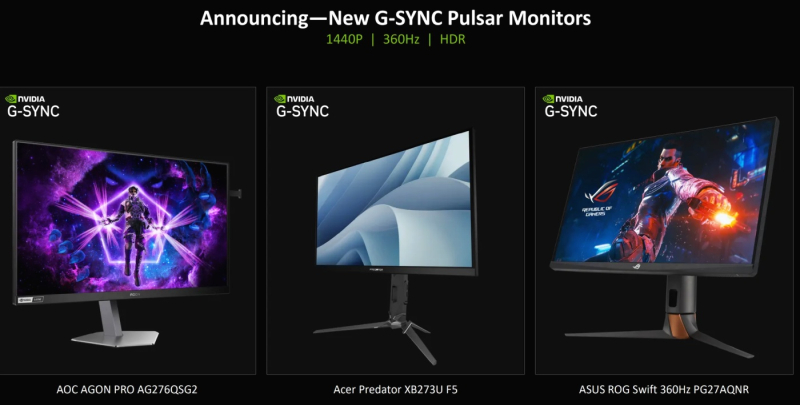MediaTek, in partnership with Nvidia, has introduced chips that provide support for all current and future G-Sync features. G-Sync technology was introduced by Nvidia in 2013 and required a custom Nvidia hardware module to synchronize the display’s refresh rate and reduce latency. G-Sync support led to an increase in the price of the monitor. MediaTek’s new chips will bring full G-Sync functionality to many more monitors at a lower cost.

Image source: NVIDIA
«”We’re working with MediaTek to bring G-Sync to their market-leading monitor chips,” Nvidia said. “We will bring all G-Sync technologies, including the latest Pulsar, to many gamers, and continue to create more G-Sync technologies with MediaTek scaling solutions.”
Nvidia emphasized that there will be no difference in operating principle and performance between Nvidia’s own G-Sync and MediaTek chips. Support for all features included in the G-Sync package has been announced:
- Variable Refresh Rate;
- Variable Overdrive;
- 12b Color Accuracy;
- Ultra-Low Motion Blur;
- Low Latency HDR;
- Reflex Analyzer;
- Pulsar.

In 2019, Nvidia introduced G-Sync Compatible, supporting variable refresh rate monitors with FreeSync technology. But G-Sync Compatible doesn’t support some of G-Sync’s features, such as low-latency HDR, Reflex Analyzer for measuring system latency, or Ultra-Low Motion Blur.
The first three monitors to include full G-Sync support using MediaTek chips are the AOC Agon Pro AG276QSG2, Acer Predator XB273U F5 and Asus ROG Swift 360Hz PG27AQNR. The displays of all three models have a refresh rate of 360 Hz, a resolution of 1440p and support HDR. All monitors feature the latest Nvidia G-Sync Pulsar technology to reduce motion blur and ghosting.

The announcement of Nvidia’s partnership with MediaTek was preceded by rumors that the companies were jointly developing an Arm-based chip for PCs with artificial intelligence. This chip may appear on the market as early as 2025, and in the future it will be used in portable game consoles. Nvidia is currently shipping its Tegra X1 GPU for the current Nintendo Switch console. The upcoming Switch 2 is rumored to be powered by a more powerful next-gen Nvidia chip.